In times of conflict, art can seem like a luxury. Yet it has always played a vital part in the making, and the attempted breaking, of nations. Drawing on art from states that formed during the same period after the first World War as our own, a new exhibition at the Irish Museum of Modern Art (Imma) is an absorbing reminder of the similarities that occupy people across the globe, even as we may battle to assert cultural difference.
Initially conceived as part of the programme for the Decade of Centenaries, and with works by artists from Finland, Estonia, Poland, Ukraine, Turkey and Egypt as well as from Ireland, Self-Determination: A Global Perspective takes on fresh meaning, and poignancy, in the light of the wars in Ukraine and Gaza, among other places.
It is perhaps a paradox that art appears less urgent when things are going well. In times of peace and prosperity the narrative of art’s mainstream can seem hijacked by investors and those who view it as being there to display a level of wealth that can dominate taste. Power is at the heart of it, and although artists do not abandon social principles and explorations during the good times, those voices are often diluted. In crises they matter more than ever.
The sprawling show has been opening in phases that began with a series of talks and events and also encompasses a poetry jukebox and a podcast. It will conclude next year with the launch of new commissions at Imma’s Courtyard Galleries.
RM Block
An introductory timeline offers a remarkable perspective. Beginning in 1913, it parallels the Irish experience with global events, both political and artistic. In 1923, as fighting in the Irish Civil War ended, an attempted coup by the Nazi party had failed in Germany, and Atatürk became first president of the new Republic of Turkey. By 1934, as Hitler declared himself führer, and the Soviet Union joined the League of Nations, the anti-jazz campaign led by the Gaelic League in Ireland was gathering momentum, and a new primary education programme was enhancing the position of Irish-language and Irish-history teaching.
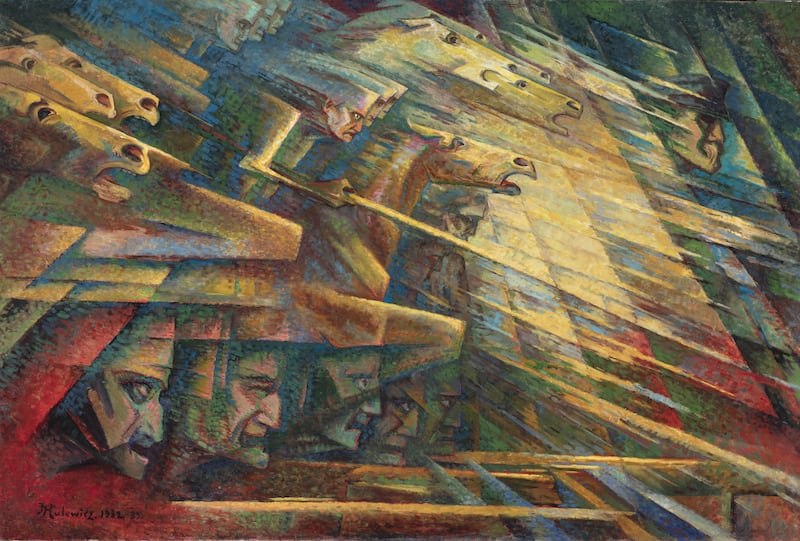
The exhibition shows the influence of modernism, of cubism, of the way charismatic teachers such as André Lhote spread an aesthetic from Paris to Ireland, Egypt, Estonia and Ukraine – and, with it, invitations to look at things differently. There are the mining of mythological pasts and a celebration of idealised futures. There are tropes of happy workers, undercut with visions of parallel dystopias, and alongside these are styles of art that prefigured, and later attempted to survive within the official order of, socialist realism.
The exhibition is also an opportunity to look more closely at art that at first glance may appear to yield only surface stories. Dmytro Vlasiuk’s Dniproges Dam, from 1932, is a case in point. It is one of a selection of works drawn from the National Art Museum of Ukraine. Seized between 1937 and 1939 by the Soviet authorities, on the basis of being made by “public enemies”, “formalists” or any artists considered to be “distorting reality” or “being a threat for the new society”, the works mirror the Nazi appellation of degenerate art. Many of the artists, as well as the director of the museum, were executed.
Nadia Tymchuk, who was one of the team from the museum who organised the transportation of these major works from Kyiv to Dublin, says that the works survived only because of the outbreak of the second World War. “They were about to be destroyed, and the museum took them into storage. Few workers knew about them – they were labelled ‘Secret’, and people forgot about them. They had other problems, you know? But that is why this special collection survived.”
Speaking from Kyiv, she describes the works as “the best examples of the true art, of the true voice of painters and sculptors who saw two sides, who were devoted to art about people, for people”. So what is it about Vlasiuk’s oil painting that was so dangerous? It shows healthy, muscular workers harvesting grain in the foreground. Behind them, the vast dam holds back calm waters, beyond which ordered blocks of factories and perhaps accommodation blocks can be seen to spread. Elements of the style of painting here would please any advocate of socialist realism, which would become the official Soviet style of art in the year this painting was made.
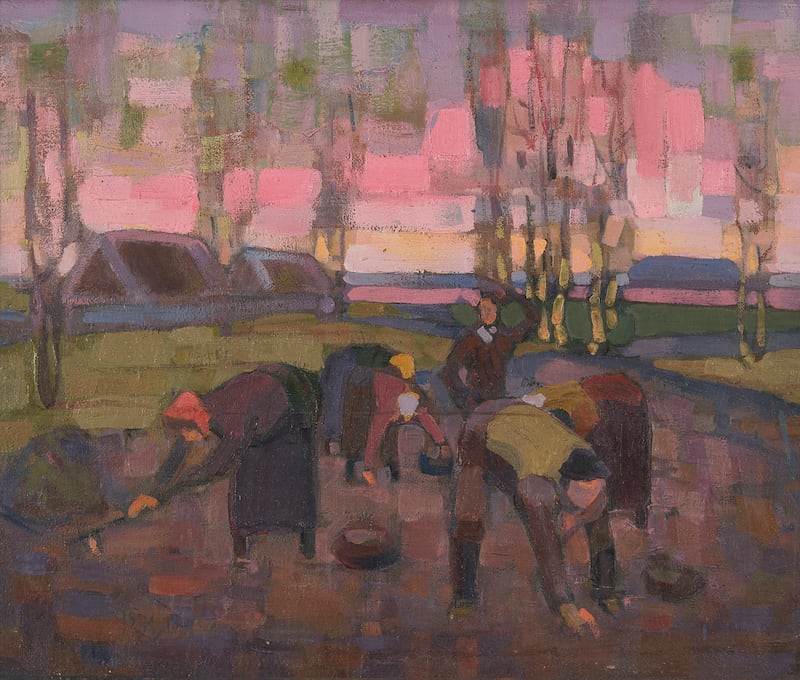
Look more deeply, however, and unsettling subtleties start to emerge. A village being engulfed by the dam waters could be a metaphor for the rising tide of progress, except for the fact that, above, small storm clouds seem to be gathering. Men in more traditional clothes are ploughing teams of horses towards the turbulent waters. Those factories? They could also resemble a prison complex – and all of a sudden it is not clear how glorious the future may be. “People from the countryside were removed overnight,” Tymchuk says. “You know, the difference when you live in the country, you have your own building, you work hard, your ancestors lived there. And now you are in a small apartment in the big city, and you have nothing from your previous life. That new life was the best case and was quite tragic.”
The bulk of the Ukrainian museum’s collections have been moved off-site for safety. The museum itself remains open, with temporary installations, talks and events. “I cannot describe this feeling when I see the empty walls,” Tymchuk says. “After our victory we will get them all back.” Today, she says, the museum is filled with people rather than the collection, which comprises 40,000 works. “We need to protect our cultural legacy. People come and visit even though there are empty halls. We need to prove our cultural distance from Russia. That is why we speak up about our art, about our history that is different.”
Self-determination as a concept came to significance after Woodrow Wilson, the US president, declared it “an imperative principle of action” in 1918, a belief he reiterated at the Paris peace talks of 1919. While describing, depicting and proving difference is at the heart of the narrative that threads through the Imma’s exhibition, what is more powerful is the evidence of similarity. Seán Keating’s scenes of conflict and of construction are echoed across countries and cultures, including in the Polish artist Rafal Malczewski’s Pipeline in the Field. Jack Yeats’s mythologising A Race at Hy Brazil is echoed in the Estonian artist Oskar Kallis’s Horse with Rider.
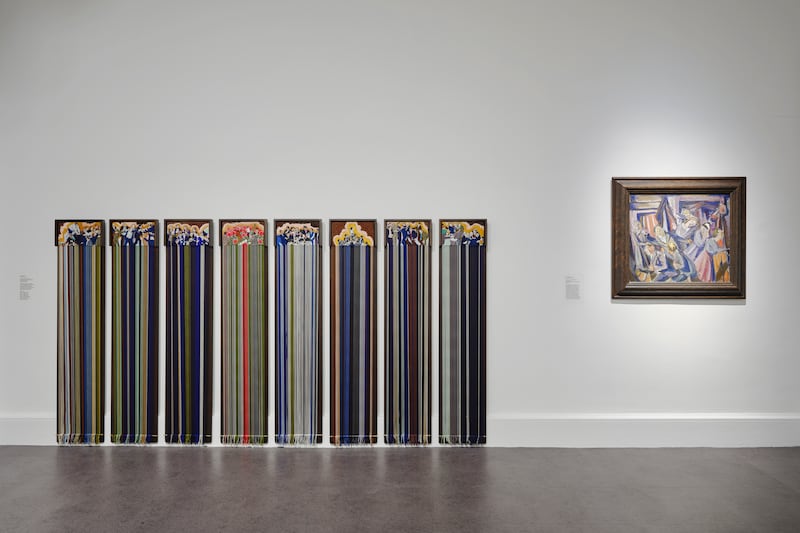
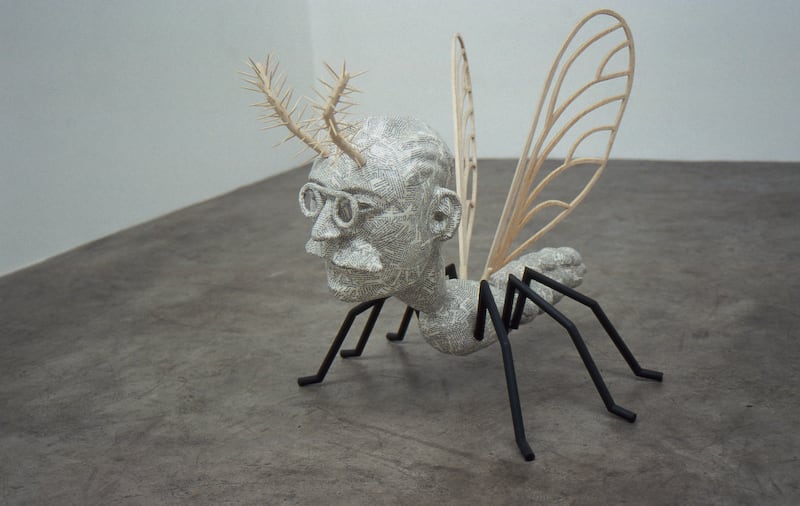
The role of women is also extensively explored. In a work commissioned for the exhibition, the Finnish artist Minna Henricksson’s large wall drawing makes parallels between the experiences of women in Ireland and Finland, as idealistic and emancipatory beginnings were quickly eroded and patriarchal norms reasserted themselves. Ursula Burke’s The Politicians is an exquisite series of embroideries in which parliaments from Greece to South Korea, Kosovo to Uganda unravel under leaden weights.
Elsewhere, Brian O’Doherty/Patrick Ireland’s Modest Proposal, from 1980, to relocate the six counties of Northern Ireland across the Border to the Midlands, “while creating some difficulties for the inhabitants of Mullingar”, is a sucker punch in a witty velvet glove – as are Alan Phelan’s papier-mache pieces, including Roger Should Have Stayed in the Jungle, from 2006, and Mosquito Man Arthur, from 2007. Both are reminders that all heroes are flawed and that people, politicians included, have feet of clay.
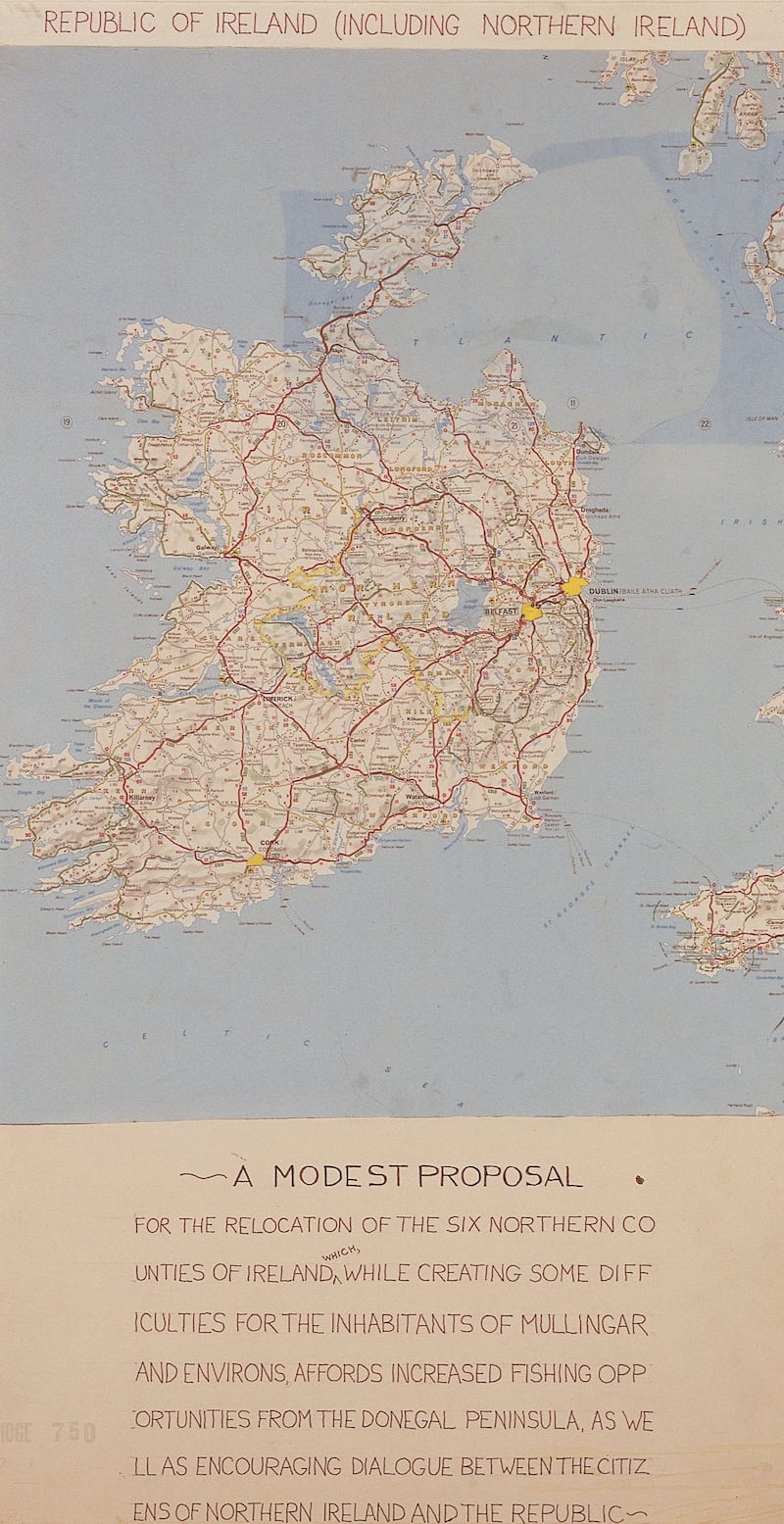
Under Annie Fletcher’s direction, Imma has been developing a role as a research institute, where art is a medium for intellectual inquiry as well as for aesthetic exhibition. Self-Determination is therefore accompanied by a “reader” rather than a catalogue. This might seem offputting to those who are alarmed by the idea of art as hard work, and the publication does contain some meaty essays, alongside poetry and extensive illustrations, including works in the exhibition. Unlike many exhibition catalogues, however, this gives the publication relevance beyond the memory of the show.
It also feeds into a wider exploration of the meanings and legacies of our ideas of state and of empire that has been gathering momentum, such as in Jane Ohlmeyer’s new book, Making Empire: Ireland, Imperialism, & the Early Modern World. Drawn from the Trinity College Dublin professor’s James Ford lecture series at Oxford University, the book examines the imperial processes shaping early-modern Ireland, including a vivid discussion of Making History, Brian Friel’s 1988 play. “What did it mean to be ‘Irish’, ‘English’, and even ‘British’ in an era of intense colonisation and mobility?” Ohlmeyer writes, pointing out that Irishness, naturally, “meant a variety of things to different people”, as it does today.
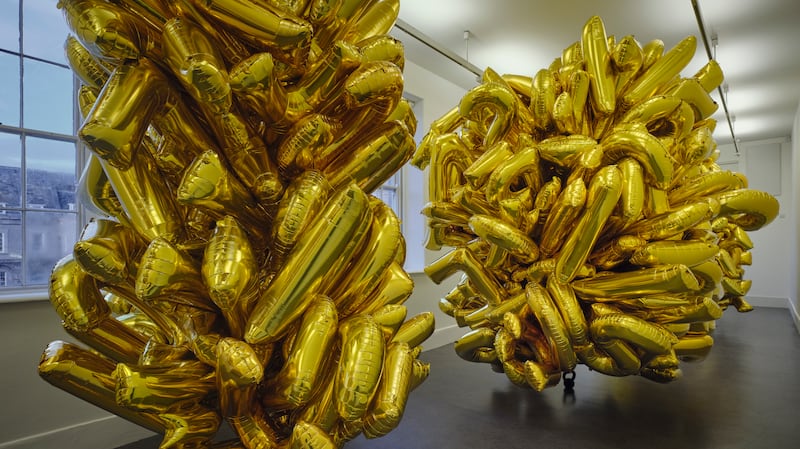
Back at Imma, lofty ideals are also explored with a light touch. At the entrance to the upper galleries in the museum’s main building, huge clusters of golden helium balloons glitter. Each balloon is a letter of the alphabet, and each cluster spells out a principle of the Universal Declaration of Human Rights, such as the right to freedom of movement, freedom of asylum or freedom of nationality. As the exhibition progresses, the balloons, by the Turkish artist Banu Çennetoglu – the work is called Right? – will slowly deflate.
Across national and cultural boundaries, Self-Determination includes work by artists who may be famous at home but are new to others, and it is testament to the curators that they come together to form a cohesive and persuasive whole. The best exhibitions provoke thought, allow us to experience different voices that are rich in ways we may not previously have experienced or explored. They also have the capacity to surprise.
Fletcher considers this idea: “Initially, things like celebrations of nature, and ideas of official and unofficial culture, are what cracked open for me in the beginning. What must have it been like to have been in this tumultuous moment? The museum is a safe space that can create narratives, and people can find themselves in those narratives. They are speculative, but that’s part of what a museum can do: it can tell stories.”
Seán Kissane, one of the exhibition’s curators, adds further context: “What has been really surprising for me has been the extent to which the exhibition unwinds narratives of Irish exceptionalism.” He recalls once reading a text that claimed the Irish were the only colonised white people, a “fact” that was held to lend a uniqueness. This project, he says, has opened a window for audiences here to the experiences of all those with connected cultural heritages.
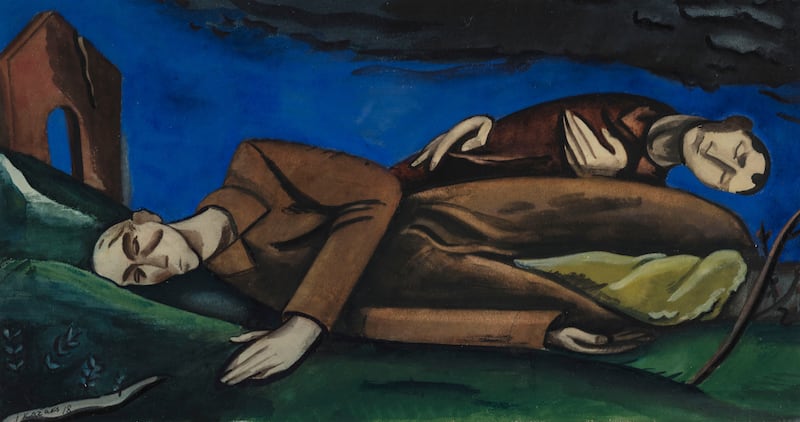
This is an antidote to what has been characterised as the “Oppression Olympics”, but it is also so much more. The exhibition is deeply and thoroughly researched, but what comes through isn’t the density of learning but the essential power of human voices, needing to be heard, and seen. Looking again at works that were considered so dangerous in their day that they were seized for destruction gives rise to wonder at the enduring power of art. Whether we are in times of conflict or of ease, art is vital, as this exhibition proves. It offers windows into thinking and carries ideas and messages across time. That lends clarity to one of the most dangerous and remarkable things that art can do, which is embodied in Nadia Tymchuk’s suggestion that the best art is the work of those “who saw two sides”. In our increasingly polarised world, that message is worth celebrating and defending, wherever we may find it.
Self-Determination: A Global Perspective runs at the Irish Museum of Modern Art, Dublin, until April 21st, 2024. New commissions launch on February 10th and run until May 12th, 2024. Making Empire, by Jane Ohlmeyer, is published by Oxford University Press





















